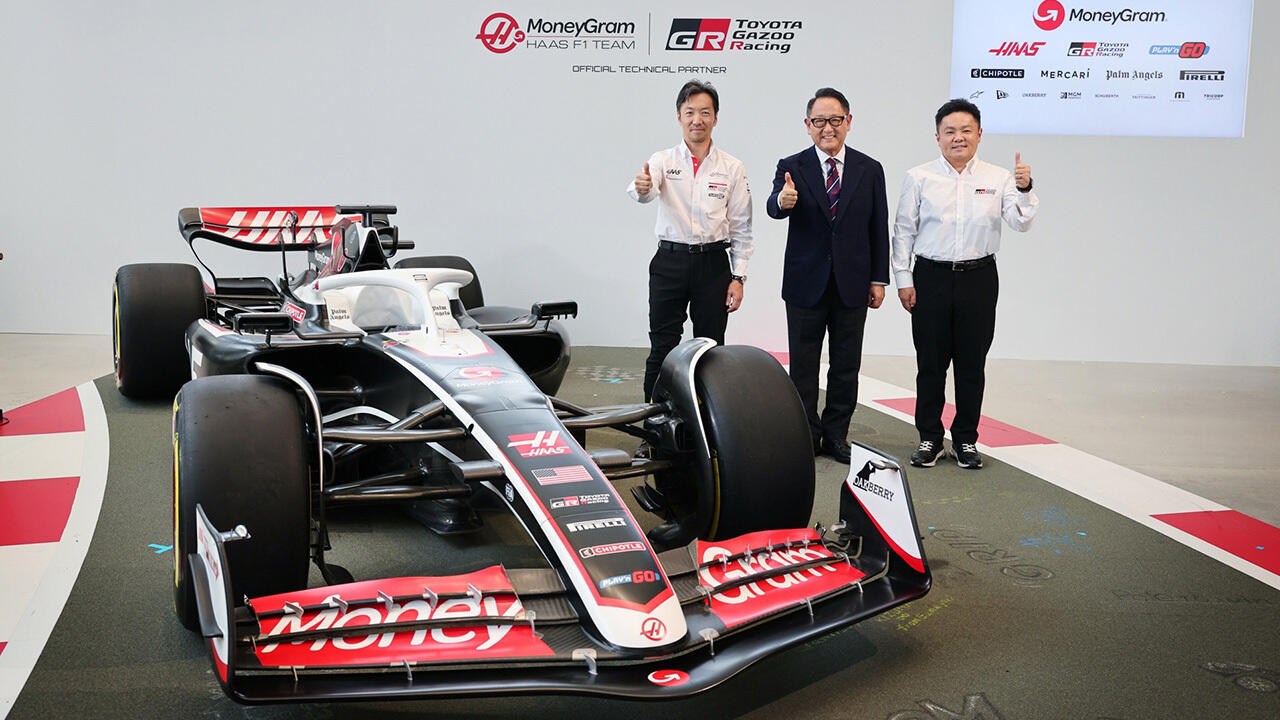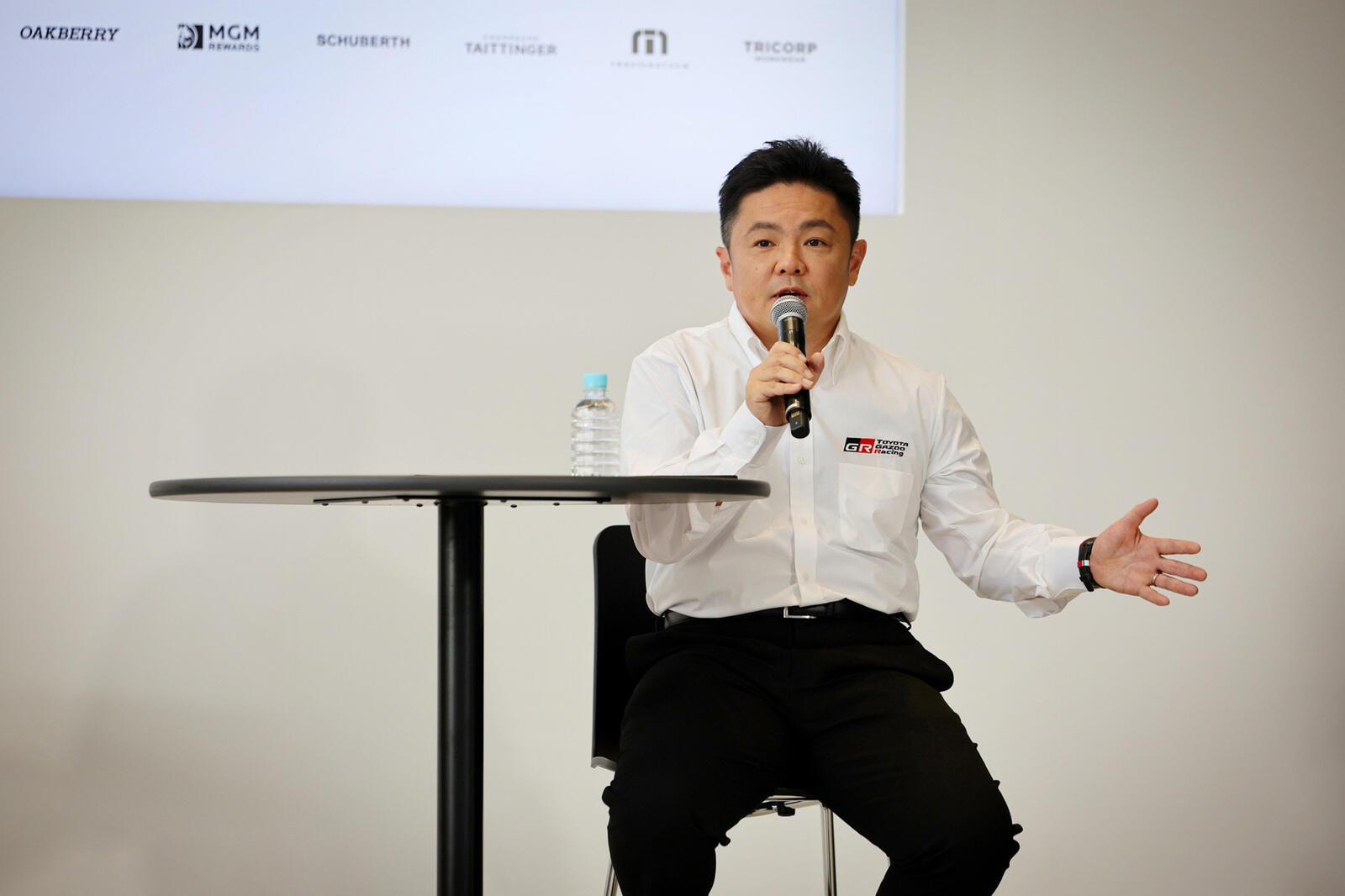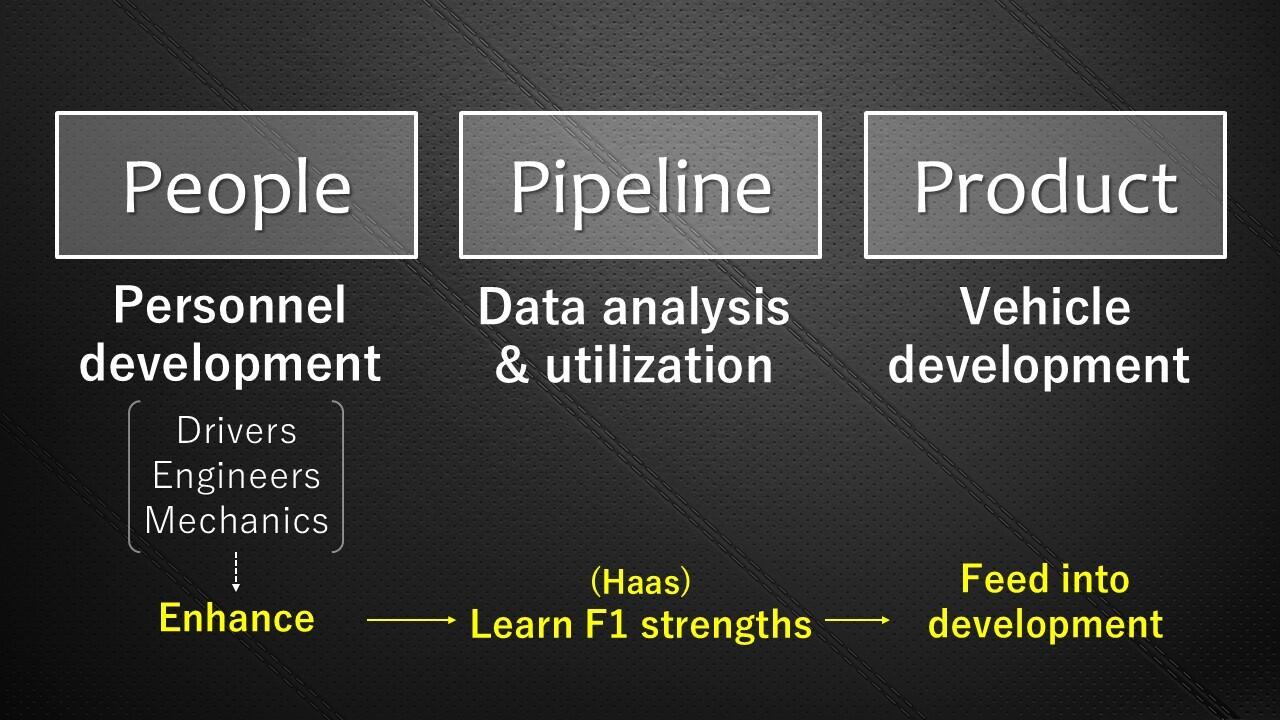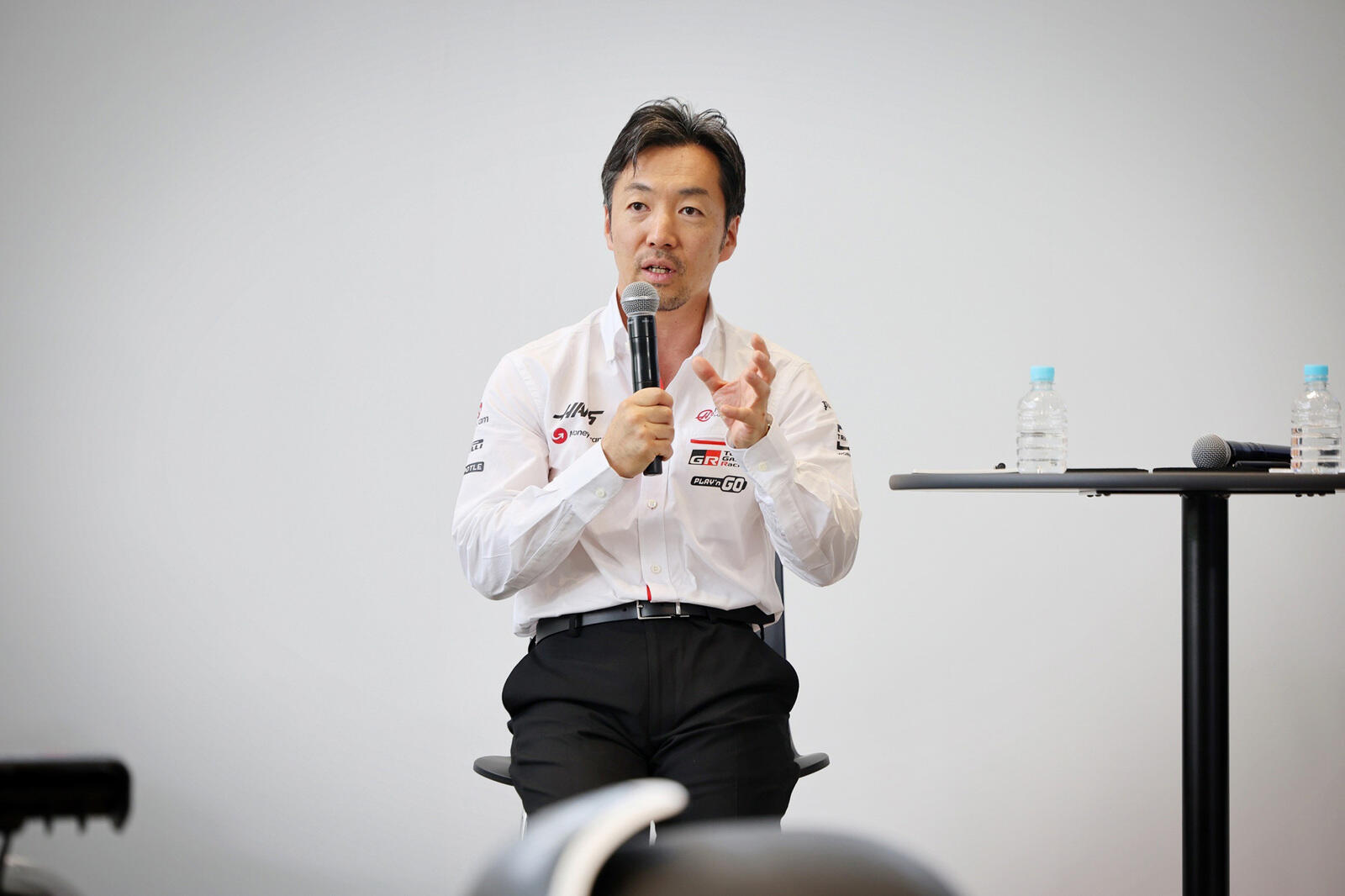
Haas and TOYOTA GAZOO Racing have teamed up to advance motorsport and allow children to chase their dreams of driving the world's fastest cars. Akio Toyoda shares his intent behind the decision.

The path to the world’s fastest cars was previously slammed shut for Toyota’s racing drivers. Is it about to reopen?
On October 11, TOYOTA GAZOO Racing (TGR) and the MoneyGram Haas F1 Team (Haas), which has competed in Formula 1 since 2016, announced a technical partnership aimed at cultivating talent and developing vehicles.
On the motorsport genba, Toyota has long pursued a “driver-first” approach to carmaking that incorporates feedback from professional drivers into the development of production vehicles. Through this partnership with Haas, TGR’s young drivers, engineers, and mechanics will get a chance to take on the pinnacle of motorsports, with their accumulated expertise and the resulting technologies helping to make ever-better cars.
Dreams and aspirations
On the day of the announcement, the teams held a press conference at Fuji Motorsports Forest in Oyama, Shizuoka. GAZOO Racing Company President Tomoya Takahashi explained the three elements of “driver-first” carmaking: people (personnel development), pipeline (data analysis and utilization), and product (vehicle development).

On the people front, Takahashi revealed that as part of this arrangement, TGR and Haas will establish a new “driver development program,” allowing TGR’s training drivers to gain F1 experience by participating in test runs. Similarly, engineers and mechanics will take part in developing racing car aerodynamics, simulating use under extreme conditions, as well as designing and fabricating carbon components.
At the same time, TGR’s engineers and mechanics will acquire expertise in instantly analyzing Haas’s vast troves of data during races and harnessing it to map out strategies in real-time, contributing to the Pipeline. The knowledge obtained through this process will be continually applied to Toyota’s vehicle development, the Product.

In terms of personnel development, Takahashi added, “The active roles of F1 drivers, engineers, and mechanics can provide children with dreams, aspirations, and goals. For TOYOTA GAZOO Racing, it is extremely important to demonstrate such hope to the children who will be responsible for the future of the automotive industry.”
On the other side of this partnership, Haas is currently in its ninth F1 season, sitting in seventh place out of ten teams after the Singapore Grand Prix in September.
At the press conference, Team Principal Ayao Komatsu described Haas as “both the youngest and the smallest team.” Having competed efficiently despite its size, the Haas team was seeking to push further up the rankings when this partnership was first mooted in February.
Haas Team Principal Komatsu

I believe that a major partnership such as this can only be built upon a relationship of respect and trust and a desire to work together towards a shared goal. Since we had plenty of that, I felt this could really work.
It was arranged that I would meet Chairman Toyoda, and I came to Tokyo before the Canadian Grand Prix in June.
Our visions were so closely aligned that it was hard to believe we were meeting for the first time. He is a very passionate person, and his ideas for the future, for inspiring Japan’s young people and the world of motorsports, shine through brightly.
These really resonated with what I want to accomplish through the Haas F1 Team, which was another green light.
I think these kinds of partnerships come about through personal connections, and that was the basis for this agreement. TGR possesses the manufacturing capabilities that we currently lack.
What we do have is the latest F1 know-how, while being short on people, facilities, and horsepower. These are things that TGR can contribute as we work together in various areas to improve the team and develop our personnel.
Formula 1 makes use of cutting-edge technologies, but the crucial element is the people. It is people who build things, who create simulation software, and who put them to use.
Even looking at the same data, each individual will make different decisions. We decided to pursue this partnership because both sides truly want to focus on developing people and creating a team whose efforts can inspire the next generation.

